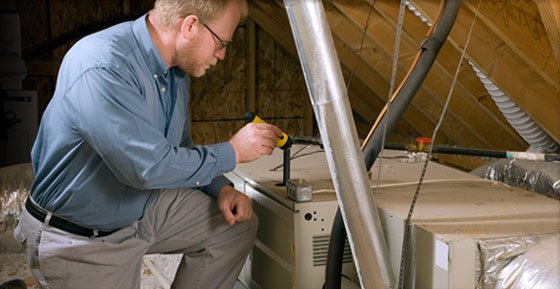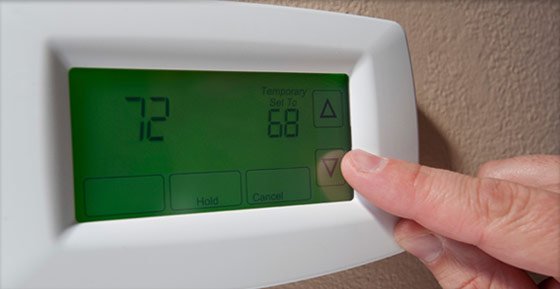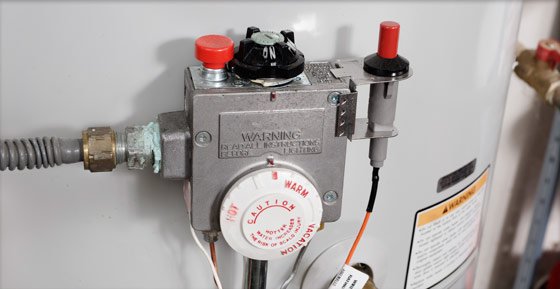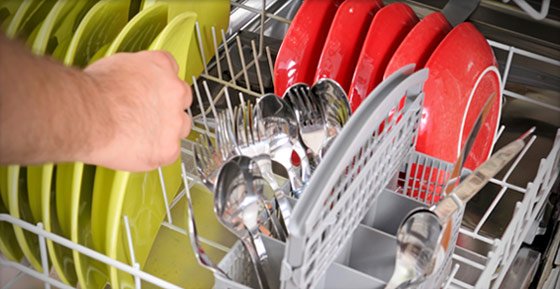
Replace that old furnace and save.
Is your furnace more than 15 years old? Have it replaced with one of the new ENERGY STAR rated models. They're about 15% more efficient than standard models.

Every degree makes a difference.
Save money by lowering your thermostat to 68° in the winter. For every degree you lower your heat in the 60° to 70° range, you'll save up to 5% on heating costs.

Don't get burned by water heating costs.
Your water heater can account for 14% to 25% of the energy consumed in your home. Make sure you have an energy-efficient model and turn it down to 120°F to save.

Use your dishwasher to save time and energy.
Did you know that your dishwasher uses less hot water than washing dishes by hand? You'll also conserve more energy if the dishwasher is fully loaded.
To calculate your energy use costs, click here.
Want to make your home more energy efficient? Follow these handy tips. They'll not only help the heating and cooling system keep your home more comfortable, they'll also save you money.
Year-Round
- Maintain the heating and cooling system. Keep the filter clean, trim brush from around the outdoor unit, and move furniture and rugs off of floor vents. It's also a good idea to have a licensed contractor give the unit an annual tune-up and inspection. If your system is old, consider upgrading.
- Your heating and cooling unit's filter may not be easy to access, but it's worth the effort. The filter on some units can be in the attic or crawlspace. Change or clean your filter (depending on the type) at least every other month.
- Have a licensed contractor check your heating and cooling system for leaks. Leaky ducts can waste up to one-third or more of the cool or hot air your system produces. That means you'll pay one-third more to heat and cool your home.
- Turn off lights. Surprisingly, a common incandescent light bulb gives off 90 percent of its energy as heat.
- Limit door and window openings all year and don't use whole-house fans in the summer. The idea is to keep the outside air from coming inside.
- Weatherize your house. Make sure insulation, weatherstripping, and attic ventilation are adequate.
- Use a programmable thermostat and set it properly to save about $180 a year. To learn more, visit the ENERGY STAR® website.
Summer
- Help the system do its job. In the summer, use ceiling fans. The moving air gives a wind chill effect and allows you to run the air conditioner at a higher setting without sacrificing comfort.
- The pre-programmed settings of a programmable thermostat help you conserve energy and money. Temperatures are set around 78° when you're most likely to be at home and active, and a bit higher during the workday and at night. It's possible to save up to 3% for every degree higher you can set the thermostat during the summer.
- Move heat-producing household chores to cooler parts of the day.
- Close blinds and drapes. Use window coverings to block the sun's direct rays on the east side of the building in the morning and the west side in the afternoon.
Winter
- If your furnace is more than 15 years old, it's time to have it replaced with one of the new ENERGY STAR® rated models and save. They're about 15% more efficient than standard models. Be sure to have it installed by a certified technician.
- Save money by lowering your thermostat to around 68° in the winter. For every degree you lower your heat in the 60° to 70° range, you'll save up to 5% on heating costs. If you have a programmable thermostat, it will come set at 70° for the morning and evening hours you are most likely to be at home and active. It will automatically turn down your heat about 8° while you're sleeping or not at home to save you even more.
- Let the sun shine in during the winter for solar heating.
Water Heating
- Your water heater can account for 14% to 25% of the energy consumed in your home. Make sure you have an energy-efficient model, like a new ENERGY STAR® qualified gas condensing water heater, which can save you over $100 a year compared to a standard model. Also turn down the temperature to 120°F to have comfortable hot water for most uses and keep saving.
General Tips
- Avoid comparing bills with a neighbor. No two families have the same energy habits and attitudes.
- Avoid comparing your present bill with the bill from a previous house. Homes can be very different when it comes to energy features, construction techniques, and the efficiency of the heating and cooling equipment.
- Remember how hot or cold it might have been just a few weeks ago. The bill you get in the mail today is really a reflection of what took place up to five or six weeks ago.


